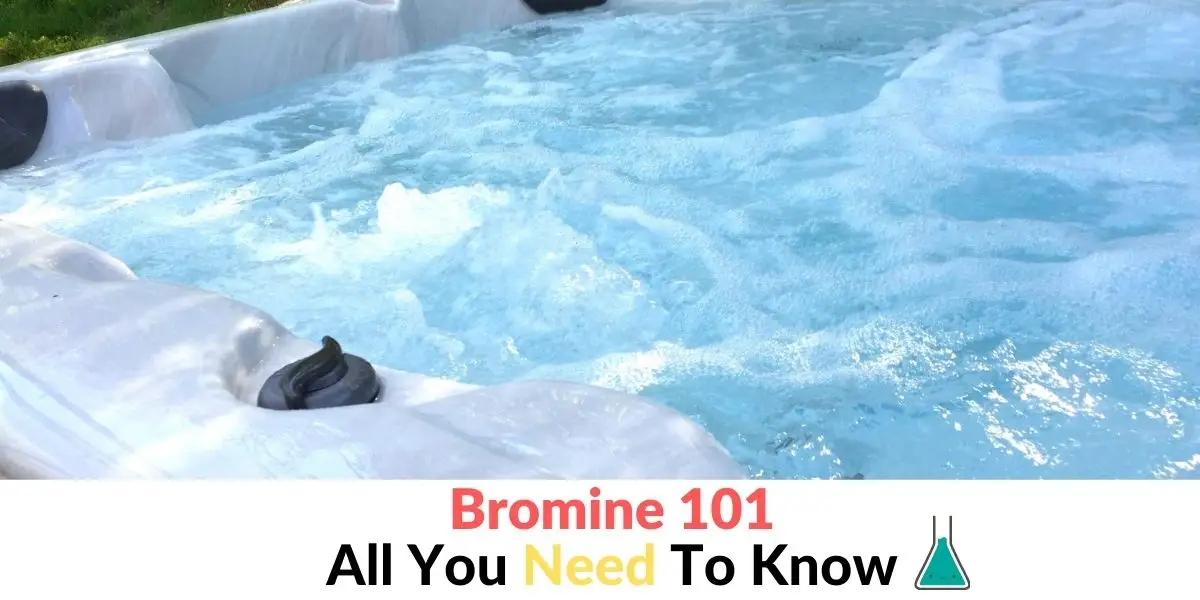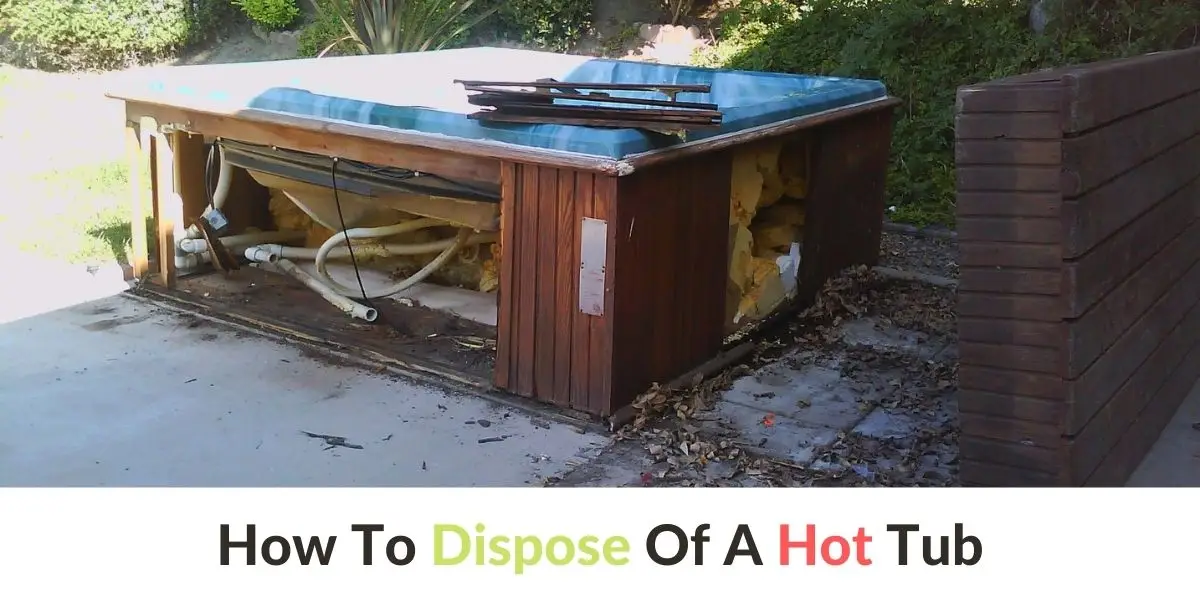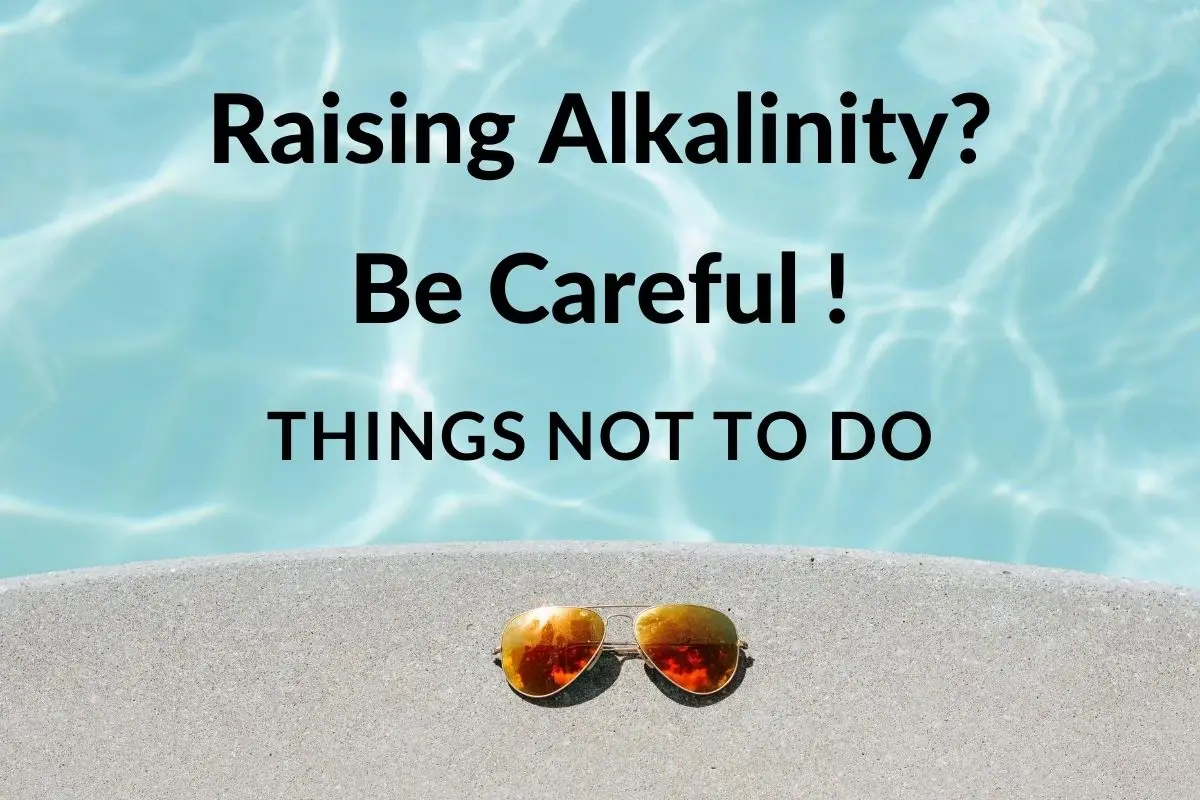Are Hot Tub Chemicals Bad For Pets?
As much as it looks adorable when your pet joins you in the hot tub, the chemicals used to sanitize the spa aren’t safe for them. Pets have sensitive skin, ears, and eyes, which can get irritated by the chlorine or bromine used in the spas.
Pets whose owners have the habit of bading with their pets in a hot tub, often unknowingly, put them in danger. Pets can have a bad reaction to chemicals used to sanitise the hot tub, they can suffer from conditions such as eye or skin issues due to chemicals like bromine or chlorine in the water.
Chemicals that are used to sanitise and disinfect hot tubs are quite strong and animals have certain sensitive organs (eyes, ears or skin, as listed) that are the main source of potential harm. This means that it is very likely that pets may experience a negative health reaction causing itching, infection, pain or discomfort. Animal lovers and owners do not want their pets to be harmed or get unwell, so it would make sense to keep pets out of the hot tub at all times in general.
Pets can often wander around the yard and home, collecting dirt and dust. The different shampoos and sprays used on animals will inevitably mix up with the water from the hot tub and any hair and fur pets shed will also be collected in the filter, potentially clogging it.
However, for those who insist on having pets in a hot tub, it is important to remember that, although most pets can swim, oversight is a very important factor. By making sure that the temperature is barely warm and only allowing them to stay in for a short time to prevent overheating of their organisms, owners can reduce the risk of causing injury to their beloved companions. Finally, it is necessary to thoroughly bade them after, to remove any chemicals left, that will stick to their skin and dry it out.
Is it Safe for Dogs to Go in Hot Tub?
Dogs in hot tubs are not generally a good idea, they have a different body temperature than humans and they cool off in a completely different way (for example – they do not sweat, except through their paw pads), so exposure to hot water may cause them severe discomfort and health issues.
These are some additional reasons and examples why dogs in hot tubs can have a negative impact:
- Dog hair is one of the major issues. Dog hair clogs up the drain and it can be very difficult to clean out your hot tub later, causing further damage to the filters.
- Toxins that dogs carry. Flea repellents and other chemicals will wash off and mix with the water you and your dog share, that could irritate your skin when it gets in touch with the water inside the hot tub.
- Damage that dogs can cause accidentally. Most dogs don’t like confining or closed spaces. In case they panic and attempt to climb out, their toenails can damage the hot tub structure.
- Chemistry that is harmful to dogs inside the water. The chemicals that are used to keep the hot tub clean may cause irritation, skin dryness or an allergic reaction to man‘s best friend.
Finally, a very important point: keep your dog safe. If you own a smaller dog, they can easily drown in a hot tub, unless attended at all times. Many small breeds of dogs cannot reach the seat or the edge of the hot tub and may tire themselves out quickly in the environment caused by high temperatures, drowning in the process. With an average temperature of 39°C (102°F), hot tub water is not a dog-friendly environment.
Is Bromine Toxic for Dogs?
Bromine is a chemical best suited for hot tubs and spas because of its ability of stabilization in hot water, but this chemical can be very difficult to rinse off from dogs, their fur and some of it may enter their digestive system and bloodstream causing illness.
Although bromide toxicity is not common, it still can happen without diligent monitoring and care. Bromine toxicity depends on several things, but usually it relates to the amount of bromide used in the hot tub.
The negative reactions your dog may have on bromine include itching, red eyes and irritation of the respiratory system. The amount used to keep pools and spas free of microorganisms and bacteria is low enough for most people and they are not affected by it.
Dogs react differently to bromine, so it is incredibly important to keep track of your dog‘s health and provide him the necessary care in case higher bromine doses enter the pet‘s system.
In smaller and controlled doses, veterinarians prescribe bromine as part of treatment for seizures, spasms etc. This compound is used in veterinary practice for a long time and can be of great help to your dog‘s health, but the dose and combination with other medication needs to be regulated by the veterinarian constantly. A safe level of bromine for your dog is 2.5 to 4 parts per million (ppm).
Is Chlorine Toxic for Dogs?
One of the most common ways dogs get ill from chlorine is drinking chlorinated water, which is known to cause gastrointestinal irritation, but unless ingested in high doses, it should not cause any serious health issues for pets. Dogs also have a lot more sensitive ears and eyes than their owners, meaning that they are more susceptible to an infection or irritation.
Chlorine is a chemical which is added to hot tub water for the purpose of breaking down microorganisms in the water and ensuring they are safe for human use. Without it, pools and hot tubs quickly turn green or even black as algae and bacteria build up in the water.
Like bromine, the potential hazard to dogs’ health varies depending on the dosage.
According to a study performed in 2006 by the American Veterinary Medical Association, dogs who ingested the commercially available form of chlorine, typical for use in pool or hot tub water in higher doses, showed life-threatening symptoms within the first eighteen hours. The mentioned symptoms included: rapid and shallow breathing, depression, dehydration, drooling and coughing.
This eventually led to kidney and liver damage, the end result being fatal. If the dog ingests chlorine, veterinary assistance is required as soon as possible. However, fortunately for dog owners, such cases are rare, since chlorine is not something dogs find appealing, because of its toxic smell and taste. One should always keep close attention of ingestion of water with high-concentrated chlorine and avoid petting them in case of direct contact with high doses of chlorine.
Does Chlorine Bother Dog‘s Skin?
Similar to human skin, dog skin is not immune to the effects of chlorine either. Dogs who have frequent contact with the family‘s water containing chlorine can suffer from dry, itchy skin, along with some other effects including dry, dull coat, because the chemicals in pool water strip the skin and coat of their natural oils.
Water with doses of chlorine may have a slightly bleaching effect on dog coats as well, even giving the lighter ones a slightly greenish colour. A lengthy exposure to chlorinated water may cause minor irritation too. The combination of these factors are known to have a scratching and over-grooming consequence on dogs, in order to relieve the itching.
The most important thing that dog owners have to look out for is the time of exposure to water containing this chemical and provide a thorough wash with fresh water afterward.
Aside from limiting the time of exposure, another effective way pet owners can help their pets in case of mild symptoms, is by simply letting nature take it course, with environmental effects slowly cleaning out the chemicals from the dog‘s body surface. In more severe cases of exposure to chlorine, a gentle layer of pet conditioner applied by a fingertip massage is recommended, or a moisturizing sunscreen in small amounts.
Can Dogs be Allergic to Chlorine?
According to various experts in relevant fields, dogs can be allergic to chlorine, although such cases are fairly uncommon. The general consensus on dog chlorine allergy is that it is a rare and an unusual phenomenon.
The culprit for health issues the dog is having that are manifesting on his skin or other body parts may likely be a consequence of some other factor, environmental or not.
In the event of skin problems, the best course of action is to take the dog to a veterinarian, who will be able to determine the exact cause of the issue(s). Generally speaking, all skin-related issues look alike, so this action will ensure ruling out any other health hazards and matters, confirming the cause is in fact an allergy to chlorine (if this is the case). When confirmed by a veterinarian, owners can take the necessary steps to make sure they are using no more chlorine than necessary. If the dog is unable to handle any exposure to chlorine at all, the owner can opt for an alternative pool chemical treatment or simply seek another, chlorine-free place for him and his dog to swim and cool off.
Chlorine water sensitivity in dogs is very rare and remains a low-reported matter in relevant veterinary circles.Scab manifestation or intense itching on dogs, especially during summertime, often have a different cause, such as flea allergies or inhaled allergies (like hayfever).
To conclude, although chlorine sensitivity is present with dogs, a chlorine-based allergy is a rarely reported and confirmed occurrence.
What Happens if a Dog Drinks Chlorine?
Drinking excess water with added chlorine can irritate the dog‘s gastrointestinal tract and lead to the occurrence of stomach discomfort and vomiting, esophageal irritation and erosion, according to The Spruce Pets.
However, situations where a dog ingests chlorine-concentrated water are not common, if the dog has other options available. The toxic smell and taste of chlorine usually serves as a good repellent for such actions.
In case where there are no alternative options to choose from, dogs can and will drink a source of water which is available to them, chlorine-contained or not. Having this in mind, it is imperative to highlight to owners that properly maintained pools or hot tubs do not contain a high amount of chlorine, so such serious conditions remain at minimum. For example, the average level of chlorine which is considered safe and used in tap water is up to 4 milligrams per liter (mg/L or 4 parts per million (ppm).
Even though chlorine is relatively safe at normal levels for most dogs (not including chlorine sensitive or chlorine allergic dogs), water that contains chlorine should never be the only source of available drinking water for a dog at any given time.
Pets should be prevented from drinking from pools or hot tubs whenever additional chemicals such as algicide are in use. On the other hand, a pool that is not well maintained and lacks purifying chemicals poses an equal danger to dogs and all other pets. Algae, excessive chemicals (chlorine or not) and other things in a poorly maintained enclosed water environment are able to cause serious issues for dogs.
Does Hot Tub Chemicals Iritate Dog‘s Skin?
A well-maintained, properly kept hot tub is generally considered safe for dog skin, except in certain long-term health conditions which dogs may have. These include allergies to chemicals used, or a highly sensitive fur coat and body.
Hot tubs use two main sanitation systems: salt water based and chemical based (bromine and chlorine) systems. This keeps hot tubs free of any harmful microorganisms or algae. The main factor for most dogs is the time of exposure to any of the mentioned sanitation systems. Prolonged exposure can lead to negative health manifestations, depending on the type of sanitation.
Hot tubs with salt-based sanitation are considered safe for dogs to use, but exposing dogs for a long period of time can actually be the cause of drying out the dog‘ skin, causing it to become flaky and tight, during an extended period of time. A good example of this can be found on dogs that spend a lot of time in the ocean, developing a dullness to their coats.
Hot tubs which use chemicals for sanitation cause a different set of issues if a dog is exposed to them too long. These health issues include dry skin, redness in the eyes and an ear irritation or infection.
The best approach regarding hot tubs and dogs would be an extensive and careful monitoring by the owner, for any visible signs of discomfort or changes which might be a sign of any health issues occurring.
Can Dogs be Allergic to Bromine?
Unlike chlorine, bromine is a more gentle chemical, which has less effect on dogs in general. Up to this point, no dogs have been diagnosed with bromine allergy, although there have been very rare cases of bromide sensitivity.
Thoughtful dog owners often choose to apply non-chlorine chemicals to their pools such as bromine, which is safer for pets in almost every aspect. In case the dog does hop in the pool sanitized with bromine, one should always remember to give him a rinse when he gets out to remove any excess chemicals. Just like chlorine, exposure time is also a factor and owners should keep this fact in mind as well.
Concentrations of bromine in fresh water typically range from trace amounts to about 0.5 milligram per liter, while desalinated water may approach 1 milligram per liter. An average concentration of bromine in hot tubs is between 3 and milligrams per liter. Due to this difference, although not an alarming one, owners should always pay attention while the dog is in the hot tub and be on the lookout for any potential health issues. Keeping bromine levels at a recommended rate should be the owners constant responsibility. High increase of bromine can be dangerous, not only for the dog, but for the dog‘s owner as well. Along with the temperature of the water, this should always be treated as a priority.
Can Pugs Go in Hot Tubs?
Pugs are a specific subject when it comes to their presence in hot tubs. It is not recommended to keep pugs as company in hot tubs. The most important issue to look out for is their body temperature.
The ideal temperature of the hot tub is between 37.9°C and 38.9°C (100-102°F) and some hot tub users who prefer a bit hotter conditions go as far as 40°C (104°F). The normal body temperature for pugs is around 38.5°C (101°F). If their temperature goes above one degree on Fahrenheit scale (half a degree in Celsius), this change can cause severe health hazards. This is why it is imperative to monitor the temperature of water in case pugs are in the hot tub. Dogs do not sweat as human beings do, so they have no way of releasing extra body heat, except panting.
This is why pugs should avoid using hot tubs or outdoor pools, due to their sensitivity and specific organism. Pugs also possess highly sensitive skin, so they are more susceptible to the effects of chemicals such as chlorine. The reaction may include red eyes and skin irritation. In case pugs can tolerate chlorine, they should be allowed to swim for 5 to 10 minutes, to limit the effects of chemicals and keep them from tiring themselves out.
Are Hot Tubs Safe for Cats?
Hot tubs are not recommended as a place where an owner can spend time with his pet cat. Although most cats tend to avoid water, there are certain exceptions. Cats are natural swimmers, so the danger of drowning itself is minimal.
But cats, just like other pets, tend to avoid confined spaces filled with hot or warm water. In time, they will attempt to leave the hot tub, causing certain damage to the edges of the hot tub and, more importantly, to their claws by scratching. Their fur can also increase in weight when wet, making moving around more difficult.
It is also very important to dry out the cats ears, where the pool water can accumulate (in the outer ear canal), leading to bacterial growth, possible infection and a painful feeling overall. Using small soft cotton balls or a small, very soft towel usually does the trick.
To protect them from harmful chemicals, the same treatment should be applied to cats as other pets, rinsing them with fresh water and drying them out with a towel. Having cats in hot tubs can be a source of great joy for the owner, but constant supervision and arrangements must be made before doing so.
How do I Protect my Dog from Hot Tub?
The best and the most efficient way of keeping your dog safe from a hot tub is installing a hot tub cover, one which will cover the entire surface, so there is no chance of him falling in.
Fencing the hot tub may sound like a good idea, but the dog might think the owner is in trouble and will do his best to help him, possibly putting himself in harm‘s way.
Another way of keeping your dog safe and away from your hot tub is removing any traces of food which could be left laying around and can attract the dog closer to the hot tub area.
To ensure the dog is protected from falling in a hot tub or causing harm to it, the best thing to do would be to acquire a sturdy, strong hot tub cover, which the dog cannot chew off or break by jumping on it. Such covers can be made of wood, vinyl, hard rubber or reinforced plastics. Regular inspection of the hot tub and the cover will ensure that potential accidents happen and your dog is kept safe.
Much like children, pets require constant attention and oversight, so it is best to keep an eye on your dog any time he is near the hot tub, or any other potentially harmful area.
Are Hot Tubs Dangerous for Dogs?
Hot tubs aren’t safe for dogs because, just like other pets, their skin, ears, and eyes get irritated by hot tub chemicals. Other than a chemical reaction, dogs don’t have sweat pores, and subjecting them to high heat can affect them.
Usually, when dogs feel too much heat, they pant. Under hot water, panting cannot solve the problem. Instead, the dog would only get tired from all the panting. Eventually, the dog may suffer from heatstroke.
Is Chlorine Bad for Dogs?
A report by CDC indicates that chlorine in concentration levels of 4 milligrams per liter is safe for dogs and other pets. Properly maintained hot tubs and pools have about 1-3 milligrams of chlorine per liter. If your dog ingests small amounts of chlorine, it may not harm them.
However, if a dog ingests chlorine in very high quantities, it can corrode their gastrointestinal tracts and cause vomiting. Besides, chlorinated water can cause skin, eye, and ear infections in dogs. If you have a dog with floppy ears, you need to be especially careful because an infection can quickly go unnoticed.
Can Cats Go in Hot Tubs?
Your cat shouldn’t go into the hot tub for reasons we’ll explore here. Firstly, a cat, just like a dog, doesn’t have sweat pores. Hot tub water is hot, and your cat may go through dehydration and heat stroke if you insist on having it in your hot tub.
Secondly, cats have hairs that can easily clog your hot tub filters and pipes. You would incur much more money to unclog your hot tub than it would cost you to keep your cat away from the hot tub.
The other reason why a hot tub is a no go zone for your cat is their sharp claws that can damage the spa. The shell is very delicate, and your pet’s sharp claws can scratch, causing cracks that can leak water.
As a hot tub owner, you already know the impact germs can have on your hot tub. Your cat can transfer germs to the spa, which can then affect humans using the hydrotherapy. It would also mean using more sanitizers to maintain a hygienic tub. This is especially the case if your cat urinates or poops in the water.
Lastly, the chemicals used to sanitize the hot tub can affect the cat by irritating the skin, ears, and eyes. Your pet is too precious to get harmed by your hydrotherapy unit.
How do I Protect my Dog from the Hot Tub?
If you’re wondering how you can keep your dog away from the hot tub, here are some tips.
- Always cover the hot tub
You can protect your dog from drowning or swimming in the hot tub by always placing the cover whenever you aren’t using the spa.
- Place a screen
Screens are easy to install and can create significant barriers protecting your pet from getting into the hot tub. A screen can work best if your hot tub is situated near two intersecting walls so that the screen forms the outer fence.
- Invisible fence
Another alternative would be an invisible fence that shocks your dog whenever it tries to go near the hot tub area.
- Avoid food at the spa
Dogs can get attracted to the hot tub by leftover foods, bones, and snacks. Avoid eating from the pool if you’re trying to protect your dog from the hot tub.
- Train your dog
Dogs are brilliant, and if well trained, they can follow instructions. If you don’t want the dog to go to the hot tub, teach it to stay away.
How do I Keep Animals Out of my Hot Tub?
All animals, just like dogs, aren’t pleasant visitors to your hot tub. Pests such as ants and rodents can invade your spa if you continuously leave leftover foods and drinks. The procedure followed in keeping dogs away from a hot tub can work on all other animals. These techniques include having an invisible fence, installing a screen, and always covering the hot tub with a cover when you aren’t using it.
Can Dog Hair Ruin a Hot Tub Pump?
Dog hair may not directly ruin the hot tub pump but will most likely clog the filters and the drain pipes. Clogged filters will have to work extra hard to maintain clean water free from any debris. More cleaning is required to unclog the filters, or else they could break down, costing you a lot on repairs or replacement.
Could My Dog Damage My Hot Tub By Swimming In It?
Several things could happen if your dog swims in the hot tub. For instance, the flea repellent chemicals sprayed on your dog could get washed away by the water. Of course, this is dangerous for humans using the hot tub. Besides, you’ll need to use more chemicals to balance the water chemicals and sanitize the spa.
Dog hairs can also end up clogging your filters. Imagine the way you find dog hair all over the house, on the carpets, and couches. You don’t want to risk blockages on the hot tub.
Dogs also have claws that can scratch onto the shell of the hot tub. These scratches could lead to large cracks that can leak the water. The shell is expensive to replace compared to other parts of a hot tub.
Can A Dog Drown In A Hot Tub?
A hot tub may not seem deep for you, but it is dangerous for dogs. It’s essential to keep your dog away from the hot tub because as it tries to swim, it may get exhausted and finally drown. Cases of dogs drowning in hot tubs are prevalent. Whenever you aren’t using your spa, ensure that you place the hot tub cover.












